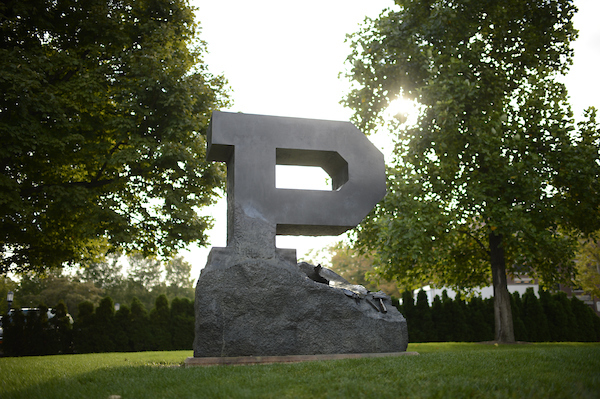
Perspectives from the Past
Purdue University proudly hosts the 2021 Allerton Higher Big 10+ Virtual Conference. Our original intention to host this historic 2021 event at Allerton House was derailed by the COVID-19 pandemic. However, the history theme integrated within this year's event is an important component and we are pleased to draw attention to accomplishments of the past.
As we move forward after this extraordinary year, we also value the experiences and perspectives of our leaders from the past. We have collected some for you to enjoy.
Keep reading to learn the story of 100 years of career services at Purdue University shared by Tim Luzader, Executive Director of Career Services at Purdue University.
In 1921, funded by a check for $3000 from Indiana Steel Works (Muncie, Indiana) and the Indiana Manufacturer's Association, Dr. A. A. Potter, Dean of Engineering, established an office at Purdue University known today as the Center for Career Opportunities. The posted responsibilities of the office at that time included personality development, occupational guidance, placement, records, adaptation of graduates, development and research, and miscellaneous other duties. This office served the men enrolled in the Schools of Engineering.
Dean Potter, concerned about students making informed career choices, developed an instrument that served as the foundation for the development of the Strong Interest Inventory in 1927. Not surprisingly, this instrument was first administered at Purdue in 1928 as a tool for facilitating the adjustment of the "vocationally unstable or misinformed students."
The recruiting process was well in place by 1928 when 210 companies visited Purdue. In 1936, the emphasis of this office shifted from simply being an employment agency to teaching students how to obtain employment. Another important function of the office at this time was the collection of information on about 2,300 companies.
Meanwhile, in 1938 several new services offered to students included model interviews and a handout entitled, "Aids to the Purdue Senior in Securing Employment." In 1941, a system was designed that allowed each student to select the 10 companies in which they had an interest. The year 1949 began a new era with an official name change to Placement Service for Men.
During the mid-1930's, a woman joined Purdue University as a faculty member. She moved into the only residence hall housing female students and became a career advisor to women. Student residents recall joining her in after-dinner walks to the local ice cream shop while she challenged them to pursue fields of study dominated by men.
Eventually this woman acquired a new Lockheed Electra airplane that she called the "Flying Laboratory" with funds from the Purdue Research Foundation. With this airplane, this woman, Amelia Earhart, began seriously planning a world flight at the equator.
The rest, well, is history.
In the early 1950s, services expanded to include a survey of prospective graduates and a series of senior employment meetings including the topics of ethics, types of interview, follow-up procedures, and job applications.
In 1966, placement services for women were offered in this office and the name became University Placement Service (UPS).
The University Placement Service continued to expand through the next 20 years, increasing services to meet the needs of students and employers. In 1972, the UPS created Grad II--the field's first computerized matching system that linked student interest and qualifications to employer position descriptions.
In 1980, the University Placement Service and Department of Humanities, Social Sciences, and Education joined to assist students from those disciplines.
By 1980, almost 34,000 interviews were conducted on campus. In support of this high volume campus-interviewing program, the UPS continued to innovate by creating technology solutions that connect students and employers. The UPS developed the nation's first interview signup campus system in 1982.
In 1985, with financial support from several corporations, VitaQuik--the first computerized college resume program was developed. This program evolved into the Data Sheet Interchange Standard, a national standard for exchanging resumes and profile data among hundreds of colleges and employers. Although the standard itself is no longer in widespread use, its basic concepts lie at the core of every major resume database in use today.
In 1995, UPS created the field's first fully functional web-based interview signup system.
In recognition of the broader scope of services provided to students, the UPS changed its name to the Center for Career Opportunities (CCO) in 1997.
While there were many more firsts, significant accomplishments and national recognitions for initiatives and programs in the 21st Century, we are focusing on history and celebrating the richness of our beginnings and honoring the pioneers that helped develop our profession.